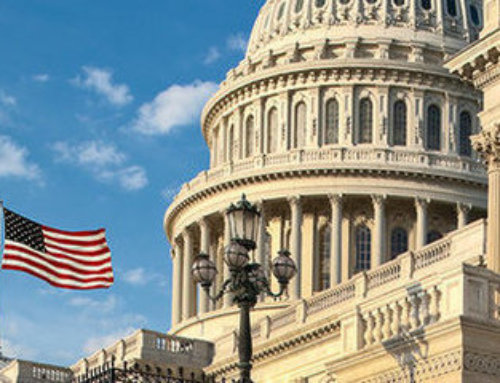On Jan. 30, 2023, the Biden administration announced that the COVID-19 public health emergency will end May 11, 2023. The Centers for Medicare and Medicaid Services (CMS) is tasked with providing guidance to health care professionals and other stakeholders regarding the potential impact of the end of the public health emergency.
Guidance for Clinicians
Remote Physiologic Monitoring services
Using the statutory waiver authority of the U.S. Department of Health and Human Services (HHS), CMS allowed clinicians to bill for remote patient monitoring (RPM) services furnished to both new and established patients, and to patients with both acute and chronic conditions. When the public health emergency ends, clinicians will once again be required to have an established relationship with the patient prior to providing RPM services. However, CMS will continue to permit RPM services to be furnished to patients with both acute and chronic conditions. (Prior to the public health emergency, an initiating visit was required before RPM services could be billed).
During the public health emergency, CMS also permitted clinicians to bill two of the RPM codes, 99453 and 99454, when as few as two days of data were collected if the patient was diagnosed with, or was suspected of having, COVID-19 and as long as all other billing requirements of the codes were met. When the public health emergency ends, clinicians will be able to bill for these services only when at least 16 days of data have been collected.
Direct Supervision requirements
During the public health emergency, CMS temporarily changed the regulatory definition of “direct supervision,” which requires the supervising physician or practitioner to be “immediately available” to furnish assistance and direction during the service, to include “virtual presence” of the supervising clinician using real-time audio and video technology. This flexibility is currently set to return to pre-pandemic rules at the end of the 2023 calendar year.
State of Enrollment
Over the course of the public health emergency, CMS permitted licensed physicians and other practitioners to bill Medicare for services provided outside of their state of enrollment. CMS has determined that when the public health emergency ends, CMS regulations will continue to allow for a complete deferral to state law. Thus, there is no CMS-based requirement that a provider must be licensed in its state of enrollment.
Stark Law
During the public health emergency, CMS allowed for certain referrals and the submission of related claims that would otherwise violate the Stark Law, if all requirements of the waivers were met. When the public health emergency ends, the waivers will terminate, and physicians and entities will be required to comply immediately with all provisions of the Stark Law.
View more detailed guidance from CMS on the end of the public health emergency and its implications for clinicians.
Telehealth
During the public health emergency, the HHS secretary implemented waivers under his statutory authority to establish flexibilities under applicable statute for use of interactive telecommunications systems to furnish telehealth services. Beneficiaries across the country have been able to receive Medicare telehealth and other communications technology-based services wherever they are located, and clinicians have been able to provide these services to new and established patients. While some telehealth policies remain tied to the public health emergency and will expire if additional legislative and/or regulatory action is not taken, the 2023 Consolidated Appropriations Act (CAA) extends many telehealth policy flexibilities and provides extended coverage through Dec. 31, 2024.
During the public health emergency, CMS expanded the list of qualifying health care providers that can provide distant site telehealth to include all providers that are eligible to bill Medicare for their professional services. The CAA extends the expanded list of qualifying telehealth providers through Dec. 31, 2024.
CMS also waived the requirement that a beneficiary receive telehealth services at a designated health care facility or rural site (originating site) in certain geographic locations, allowing the patient to be anywhere, including the home. The CAA extends the waiver of the originating site and geographic location requirements through Dec. 31, 2024.
Congress removed geographic restrictions and added a Medicare beneficiary’s home as a permissible originating site for the diagnosis, evaluation, and treatment of a mental health disorder, but required an in-person visit between a patient and their provider prior to beginning telehealth treatment. The CAA delays implementation of the in-person visit requirement through Dec. 31, 2024, meaning that beneficiaries can continue to access mental telehealth services from home until Jan. 1, 2025, without needing to have an in-person visit with their provider before beginning treatment.
CMS permitted payment for certain audio-only evaluation and management (E/M) telephone codes for new and established Medicare patients. The CAA will continue to permit telehealth services via audio-only telecommunications through Dec. 31, 2024.
CMS waived the requirement that Federally Qualified Health Centers (FQHCs) and Rural Health Clinics (RHCs) cannot serve as distant site telehealth providers and, therefore, cannot qualify for the distant site payment. Reimbursable codes are limited in scope. During the public health emergency, FQHCs and RHCs can be distant sites and can be reimbursed at an amount comparable to the physician fee schedule amount. CMS also expanded telehealth codes that FQHCs and RHCs may use for reimbursement and will allow these to be applied to new and established patients. The CAA permits FQHCs and RHCs to continue providing telehealth services through Dec. 31, 2024.
Durable Medical Equipment (DME)
CMS will continue to adjust the fee schedule amounts for certain durable medical equipment, prosthetics/orthotics, and supplies (DMEPOS) items and services furnished in non-rural, non-competitive bidding areas within the contiguous U.S., based on a 75/25 blend of adjusted and unadjusted rates through the remainder of the public health emergency.
During the public health emergency, CMS established toll-free hotlines for physicians, non-physician practitioners, and Part A certified providers and suppliers who have established isolation facilities to enroll and receive temporary Medicare billing privileges. When the public health emergency ends, the hotlines will cease operations.
During the public health emergency, CMS expedited pending or new applications from providers and suppliers, including physicians and non-physician practitioners received on or after March 1, 2020. When the public health emergency ends, CMS will resume normal application processing times.
View more detailed guidance on the end of the public health emergency and its implications for DME.
Specific questions regarding the potential impact of the end of the public health emergency can be sent to the AASM health policy team at coding@aasm.org.
Source: McDermott + Consulting Telehealth Policy Update
UPDATE: CMS waivers, flexibilities, and the end of the COVID-19 public health emergency
CMS has published an updated list of responses to frequently asked questions regarding the end of the COVID-19 public health emergency, addressing telehealth, reporting requirements, and the end of Medicaid continuous enrollment. These FAQs contain the most up-to-date information. Members may send questions to coding@aasm.org. Updated May 12, 2023





